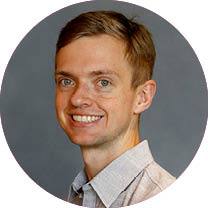Researchers from Rice and other collaborators were awarded grants to study social, political, psychological and epidemiological aspects of COVID-19, according to the announcement. Researchers were also awarded grants who are working on developing genetic tools, a new ventilator design, a method to efficiently schedule nurses and social distancing performance protocols for musicians at the Houston Symphony and elsewhere, according to the announcement.
The grants were awarded as part of the third and final round to be backed by the fund, which announced its first round April 20 and its second round May 7. The fund was established to be a flexible way to back projects in biomedicine, engineering, social sciences, humanities and other fields intended to help end the pandemic and prepare for similar outbreaks in the future, according to the university’s webpage.
The approved proposals are as follows.
- Fred Oswald of Rice, Rodica Damian and Tingshu Liu of the University of Houston and Patrick Hill of Washington University will examine critical long-term effects of COVID-19 on human development following adversity across a range of social contexts, including occupational, educational, community, family, lifestyle, health and financial. The study will analyze how people change in response to adversity and whether adversity across different social contexts impacts people differently.
- Daniel Kowal and Thomas Sun of Rice will build a predictive model for the trajectory of COVID-19 cases in Houston by borrowing information from locations similar to Houston and further along the disease incidence curve. They expect their model to improve the accuracy of real-time predictions and to inform key policy decisions.
- Amelyn Ng of Rice and Gabriel Vergara of One Architecture and Urbanism will investigate how stay-at-home orders have disproportionately disrupted the domestic lives of Houston households, particularly low-income families with children. The survey conducted by the duo will concentrate on Houston’s Greater Fifth Ward and will identify which home stresses require urgent mitigation, which may be quickly overcome through spatial reorganization and which are likely to persist or worsen beyond the emergency.
- Laura Segatori and Omid Veiseh of Rice plan to engineer cell lines for the rapid development of clinically translatable neutralizing antibodies for infection control. The project will include a fluorescent reporter and a drug-resistance marker that will allow for evaluation of expressed antibodies and antibody fragments that neutralize SARS-CoV-2, rendering it unable to spread and reproduce.
- Danielle King of Rice will create a statistical analysis that works to better understand how COVID-19 has changed work conditions for critical human service employees who can no longer go to the workplace, like teachers, and those required to, like nurses.
- Michael Wong and Rafael Verduzco of Rice and John Graf of NASA will continue development of a NASA-designed prototype ventilator for rapid deployment based on an off-the-shelf automotive oxygen sensor.
- Ashok Veeraraghavan, Robert Yekovich and Ashutosh Sabharwal of Rice and John Mangum of the Houston Symphony will investigate proper social-distancing protocols for rehearsal and performance by musicians and singers by studying the air flow created by wind instruments and singers using high-speed imaging. Their data and analysis will be made public to benefit musical organizations and individual musicians.
- Hulya Eraslan, Rossella Calvi, Dibya Deepta Mishra and Ritika Sethi of Rice will study how state and local officials have employed public health measures in response to COVID-19 and whether the patchwork of jurisdictions is making the response to the pandemic more or less effective.
- Andrew Schaefer, Illya Hicks and Joseph Huchette of Rice and Nicole Fontenot of Houston Methodist Hospital will use optimization models to plan nursing schedules during times of uncertainty when a hospital’s needs are highly variable.





